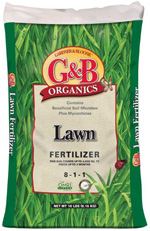|

    
 
|
 |
FEATURED QUOTE: "Bread and butter, devoid of charm in the drawing room, is ambrosia eaten under a tree." |
 |
 |
 Deciduous Fruit Trees are Here! |
 |
|
One of the true pleasures home gardeners can experience is growing their own fruit. And with a little planning, it's possible to have an extended harvest season. Even gardens that are short on space can have an extended harvest if the proper planting techniques are used. The key to an extended or year-round harvest is understanding the ripening times of fruit trees. With deciduous fruit trees, you can start with early varieties of apricots that ripen as early as mid-May, followed by a crop of cherries in June. The summer months bring nectarines, peaches, plums and pluots in from mid-June through August. After that, apples, pears and persimmons ripen in September and October. Figs will bear fruit from early summer to late fall. If you are short on space, consider planting more than one variety in the same hole. Just make sure to plant trees with similar growing habits. Apples, cherries and pears tend to be the fastest and highest growers. Most deciduous fruit trees will produce a great-tasting crop of fruit as long as they receive at least 5-6 hours of sunlight during the growing season. The final secret to getting great tasting fruit is to wait until the fruit has ripened completely on the tree. This allows the sugar content to be at its highest level. The problem with most store-bought fruit is that it is harvested long before it is ripe so it will stand up to the rigors of shipping. The fruit never develops the same intense flavor on a shelf as it does on the tree. Now is a great time to plan your home fruit orchard. If you have any questions, our staff of fruit tree experts will be happy to help you plan your fruit tree garden! |

|
Choose some of the most dependable, easy-to-grow evergreens as the backbone of your indoor displays. Many of them are tough enough for the more difficult positions around the home, and some are bold enough to be focal point plants, too. The glossy evergreens such as dracaenas, fatsias, ficus, scheffleras, palms and philodendrons generally make excellent stand-alone plants, but they can also be used as the framework plants for groups and arrangements. They will be far more robust than plants with thin or papery leaves, feathery and frondy ferns, or even those with hairy leaves. You will need these other leaf textures, as well as flowering plants, to add variety of shape and form and a touch of color, but it makes sense to use the toughest evergreens as the basis of your houseplant displays. When a tough plant is needed for a cold or drafty spot, such as a hallway or near a back door, consider using some of the hardy foliage plants that have to cope with frost and gales when planted outdoors. Ivies are also good for these areas if you want a tough climber or trailer insteaad. There are lots of varieties to choose from, with a wide choice of leaf shape, size and color. |
 |
|
If you are a berry lover, you can't possibly have a garden without dedicating a space to grow delicious homegrown strawberries. Some people even go as far as saying they are the best of all the berries. What is unique about the strawberry (actually a member of the rose family) is that it is the only fruit with seeds on the outside rather than the inside. The delicate but great-tasting heart-shaped berry has always been associated with love, passion, purity, and healing. Legend has it that if you break a double strawberry in half and share it with a member of the opposite sex, you will fall in love with each other. And speaking of legends and folklore, locals in some parts of Bavaria still practice the annual rite--each spring--of tying small baskets of wild strawberries to the horns of their cattle as an offering to the elves. They believe that the elves, (who are known to be passionately fond of strawberries--what good taste they have), will help to produce healthy calves and an abundance of milk in return. Strawberries are also prized for their medicinal purposes and health attributes. Ounce for ounce, strawberries have more Vitamin C than citrus fruit and have been associated with lowering cholesterol, easing symptoms of gout and digestion problems and lowering the risk of certain types of cancer. Strawberries are generally divided into three groups: spring-bearing, everbearing, and day-neutral. The fruits of day-neutral plants and everbearers are usually smaller than the fruits of the spring-bearers. Spring-bearing strawberries generally produce a crop during a 2-4 week period in the spring. Ever-bearing strawberries produce three periods of flowers and fruit during the spring, summer, and fall--while day neutral strawberries will produce fruit throughout the growing season. Strawberries prefer the sun but do tolerate some shade. They can be used as an edging plant or a groundcover. Their major requirement is good drainage, so they'll benefit from being planted in mounded soil, terraced beds, barrels or other types of containers. They can be grown indoors, even, in a sunny window or with supplemental lighting, which makes them a great candidate for starting indoors in cold areas. We invite you to discover the sensational flavor of homegrown strawberries! Strawberry Planting and Care Instructions Placing plastic sheeting underneath the foliage will help keep the soil warm and weed-free. It also deters slugs, snails and other crawling insects from feeding on foliage and berries. Water bedding plants using drip irrigation or by flooding trenches between the mounds or terraces. Water plants in containers under the leaves. Keep them healthy during the fruiting season by feeding with a fertilizer that is low in nitrogen and will promote more bud growth and fruit. |

|
There are so many reasons to grow your own herbs. Even the simplest of dishes differs in taste when fresh herbs are used instead of dried, packaged supermarket varieties. Named the 2005 Herb of the Year, oregano blooms with purple blossoms from July through October. A member of the mint family, this species is a hardy perennial in warmer climates, is easily grown from either seeds or cuttings, and may be divided. (If you are growing from seeds, sow them in rows 18" apart, early in the season; cover lightly with soil, and thin the young plants to 12" apart.) Oregano is not only a useful and usual addition to any herb garden, it also makes a wonderfully easy-to-grow houseplant! While it is still small, place it in a sunny window in well-drained soil and watch it grow! After a winter's enjoyment of the plant, when Jack Frost is no longer a danger, transplant it outdoors. Not a fussy plant, oregano does fine in average soil, and will tolerate dry soil conditions. In fact, it is a native of the Mediterranean region and is perfectly capable of withstanding droughts. Withholding fertilizer actually causes oregano to produce a stronger flavor. Harvest after the plants have produced several dozen leaves; the young tender leaves produce the best flavor when picked early in the morning when the oils are strongest. To ensure that the leaves do not turn bitter, pick the flower buds upon first appearance; blooming leads to bitter leaves. The name oregano comes from the Greek oros, meaning "mountain" and ganos meaning "joy." The plant grows joyously wild in the mountains of Greece. During the Roman-Greco era, marrying couples were crowned with it, as it is a symbol of honor, good luck, and good health. If you weren't already affianced, it was believed that you could anoint yourself with oregano prior to sleep, and you would dream of your future spouse. Mix the dried leaves with honey, and you have a balm that is said to aid in fading bruises. Brew oregano tea by steeping 3 tablespoons of fresh crushed oregano leaves in 8 ounces of boiling water for 10 minutes; drinking this mixture is said to ease coughs and indigestion, and to aid in achieving a restful sleep. And we all know it's an excellent spice! We hope you'll enjoy this aromatic, medicinal and culinary gem: oregano. |
 |
|
What makes an organic fertilizer truly organic? Answer: A fertilizer can be labeled as all-organic when it is completely composed of naturally-occurring ingredients. While people place an organic label on manures--and products such as bone meal, blood meal and "hoof and horn" are considered organic--most blended organic fertilizers do not contain these products. Most organic fertilizers use only plant and fish by-products as a source for their nutrients. The majority of organic fertilizer blends contain a mixture of alfalfa meal, cottonseed meal, kelp meal, feather meal, fish bone meal, mined potassium sulfate, soft rock phosphate and seaweed extract. Organic plant foods break down faster in meal form than in pelletized form, because pellets have a binding agent that needs to be broken down before the nutrients can become available to the plant roots. |

 click here for a printer friendly version of this page
click here for a printer friendly version of this page
 |
Written content © Garden Partners LLC, or respective authors. All Rights Reserved. Privacy Policy. All written content contained in this site is protected by United States copyright law and may not be reproduced, distributed, transmitted, displayed, published, or broadcast without prior written permission of Garden Partners, LLC. You may not alter or remove any trademark, copyright or other notice from copies of the content. |



